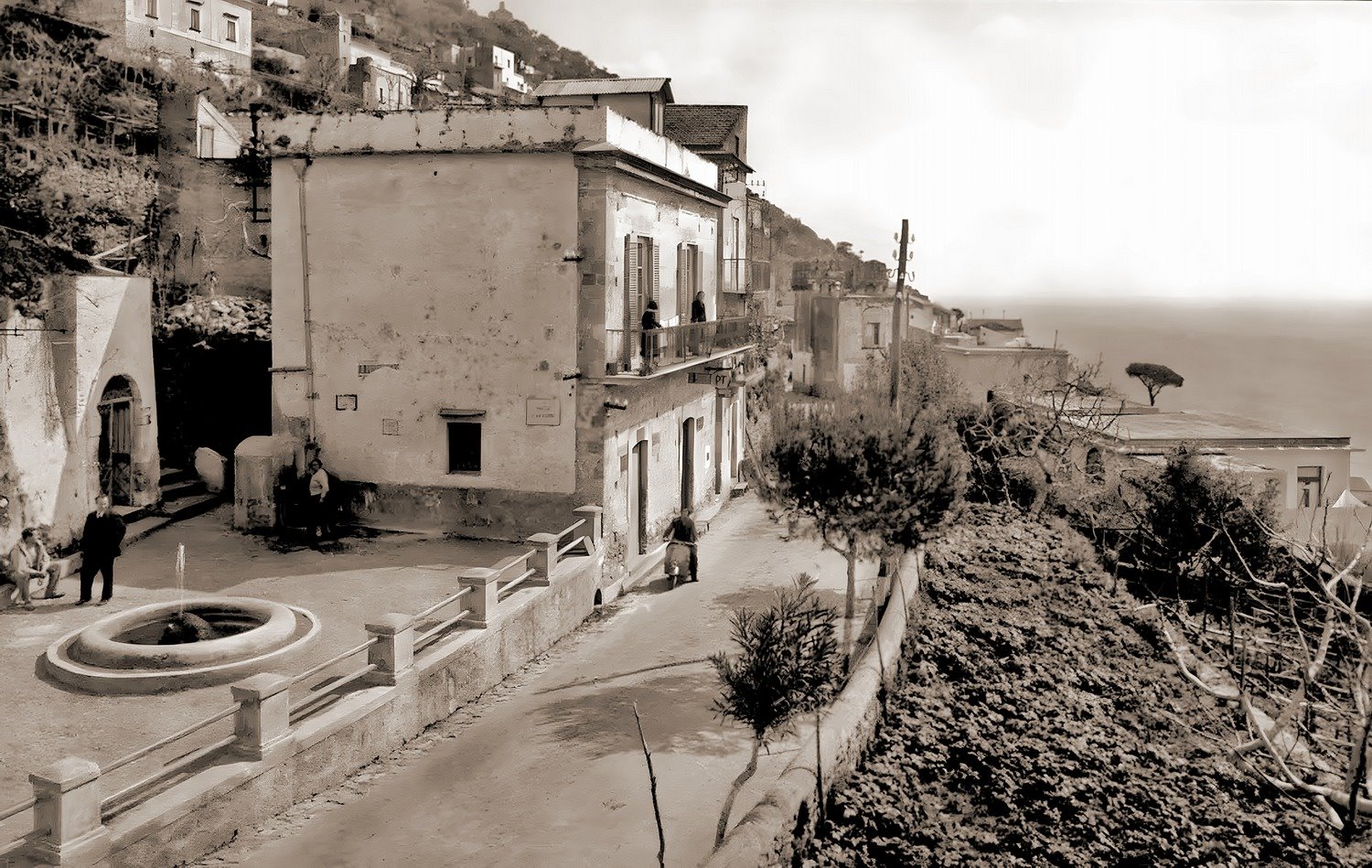You are here: Charming VillagesThe Amalfi Coast of the 1960s: Vettica Maggiore in Praiano
Written by (Massimiliano D'Uva), Monday, February 24, 2025 8:29:57 AM

Vettica Maggiore, a fraction of Praiano, stands as a historical and cultural gem on the Amalfi Coast, offering breathtaking views of Capri and Positano. A recently surfaced photograph from the 1960s, shared by Giovanni Forgione, reveals a significant moment in the area’s urban and architectural evolution, capturing the local post office building along the Amalfi Coast Road (Statale Amalfitana).
The image, featuring the intersection with Rampa Francesco Russo near a small square with a fountain, provides insight into the past layout of this coastal route. While the road may have undergone slight modifications and widening over the decades, its fundamental structure remains recognizable today. The vantage point of the photograph places it above the Church of San Gennaro, reinforcing the historical context through contemporary Google images referenced in discussions.
Aldo Cinque, a scholar of Amalfi Coast toponymy, notes the recurring name "Vettica" along this stretch of coastline. Two distinct locations bear the name: Vettica Minore, a fraction of Amalfi, and Vettica Maggiore, part of Praiano. Both were once rural settlements under the dominion of the Republic of Amalfi, whose territorial extent stretched from Maiori in the west to the borders of Positano in the east.
During the height of the maritime republic’s influence, these areas were vital casali (hamlets) contributing to the prosperity and maritime prowess of Amalfi. Over time, as the geopolitical landscape evolved, Vettica Maggiore remained an integral part of Praiano, while Vettica Minore continued to be associated with Amalfi.
The architectural and infrastructural modifications evident in the photograph highlight the organic transformation of the Amalfi Coast over the last century. While modernization efforts, such as road expansions, have taken place, the region has strived to preserve its authentic charm and historical identity. The post office building, once a prominent feature of this coastal stretch, remains a silent witness to the community’s resilience and continuity.
Today, Vettica Maggiore retains its timeless allure, maintaining a delicate balance between progress and heritage. The visual documentation of its past, like the photograph shared by Forgione, serves as a crucial link connecting generations and reminding residents and visitors alike of the ever-evolving story of the Amalfi Coast.
Photo and Source: Giovanni Forgione - Antiche immagini
 Giovanni Forgione - Antiche Immagini
Giovanni Forgione - Antiche Immagini
rank: 106917108
There is a special magic along the Amalfi Coast in autumn, when the golden days of summer give way to a quieter, more contemplative season. At dawn, the small town of Atrani awakens slowly, bathed in a palette of colors that shift from deep violet to fiery orange, before softening into the pale blue...
Tucked into the steep coastal edge west of Amalfi, Vettica Minore is more than just a scenic hamlet—it’s a living postcard from the past. With the terraced slopes cascading toward the sea and the soft curve of the coastline embracing it, Vettica is a lesser-known but unforgettable corner of the Amalfi...
In the heart of Raito, a hamlet of Vietri sul Mare, the Church of Santa Maria delle Grazie became the backdrop for one of the most iconic scenes in Italian cinema in 1959. It was October of that year when, among the picturesque streets of the Amalfi Coast, the film Cerasella, directed by Raffaello Matarazzo,...
Nestled on a picturesque hillside, Pontone is a charming district of Scala, the oldest town on the Amalfi Coast. Until the early 20th century, Pontone was part of the territory of Amalfi, and its serene atmosphere made it a preferred retreat for the clergy and nobility of the medieval Duchy of Amalfi....